I thought about this little episode after Pierre Boulez’ recent passing.
Years ago, while working in Paris teaching ESL to middle managers at a French language school, I splurged and bought two tickets to the Béjart Ballet. I wasn’t making great money so this was a big expense. I had a hot first date, however, and wanted to have a special night out.
Michele Kinloch–I still remember my date’s name–and I arrived at the venue, which I recall was the Palais des Congrès, and the first piece had music by the late Pierre Boulez, which I hated. It was angular and awkward and irritating, and took away from the dancing and choreography. I just will never like this sort of modern music, sorry. I like Boulez as a conductor, but find him a little cold and analytical for my taste. Give me Bernstein or Monteux or Previn instead.
The next pieces were romantic pieces done to the music of Mahler, I think the gorgeous slow adagios / adagiettos from the 3rd and 5th symphonies. This was sumptuous and romantic music, and with the dance it was overwhelmingly moving. I was moved to tears by it all. My date seemed to enjoy it. I, however, was totally smitten and was in sort of a puddle at the end, and forgot to bring Kleenex.
We went out to a nice restaurant after that, where I spent the rest of my money. I had just enough to take the metro back to the 16th arrondissement, where Michele lived with her parents. Did I tell you I met her at the school I was teaching at, the École Universelle, also in the 16th, the Beverly Hills of Paris? There we drank some of her parents’ cognac. Some cork fell into my glass and I drank it, as I was told that swallowing a little cork was good luck.
The problem was that I had to walk all the way back from the 16th to the 14th, where I had a tiny cold water flat. The metro stopped running at 12:45, and I didn’t even have enough change for the bus. And so I walked.
I checked my guidebook, my Plan de Paris, and decided on a shortcut, taking side streets instead of the bigger boulevards. This proved to be a costly mistake.
In a little while I was stopped and asked directions by a group of men who seemed a little out of it. I thought they were drunk. I dutifully obliged them, spreading out my Paris map on the top of a car. They kept asking me questions as if they were not understanding my directions. What they were really doing was checking out the gold watch on my outstretched arm and exposed wrist that my dad had given me.
A few minutes later I was approached by a group of men, hit hard in the head, and fell to the ground where I was kicked in the head some more. I was unconscious when I heard the sound of a gun going off. I thought to myself “So this is the way I’m going to die”. A 24-hour plumber was working nearby and saw the assault and mugging. He picked me up off the pavement, helped me stagger to his little deux chevaux camion (small truck) and, handing me a pistol, told me that we were going to go get those bastards. I folded the window up and waited for directions. I was still pretty out of it. I don’t like guns, never have, but would have pulled the trigger if the plumber told me we’d found the guys and told me to fire.
We didn’t catch the culprits and the good Samaritan plumber took me to the nearest police station. I sat in the waiting room. A working woman was sitting near me, and came over. “Ah, mon pauvre cheri, vous êtes blessé”. She wiped some of the blood off my head with her mouchoir. Suddenly she turned on me and started hurling expletives. She also hit me on the head and re-opened my head wound.
I had a small amount of useless Congolese ganja in my pocket and panicked that the police would arrest me if they found out. I went into the bathroom and was about to toss it into the urinal when I noticed the big convex wide-angle mirror with the watchful eyeball of a policeman watching my every move. Great. Now I won’t get a work permit. Maybe even get deported.
Eventually the police took me to the indigent hospital nearby, run by l’Assistance Publique, rue Vaugirard. I should have requested the American Hospital in Neuilly but didn’t. I was x-rayed by a technician for a long time…he just kept taking x-rays. Eventually I noticed that he was taking hearty swigs out of a wine bottle. No wonder he couldn’t get it right. After that another man came, sprayed my forehead with antiseptic spray, and stuck a horse needle in with some very crude stitches.
I was led up to a room filled with people and assigned a cot. Trouble was, the man in the cot next to me was moaning and wheezing like he was about to expire. I couldn’t stand it, but when he stopped wheezing, I was even more alarmed, fearing he’d died. I wanted to escape this medieval hospital and got up to leave. A large woman stopped me and sent me back to my bed.
In the morning I signed some papers saying I was refusing doctor’s care. I walked to the nearest metro and took a seat. People who saw the blood matted in my hair and on my clothing moved away from me. It was nice having a little space on the morning commute to myself.
I never saw Michele Kinloch again. And I still don’t care for Boulez’ acrid music. Not bad for a first date. But I still have a scar to prove it wasn’t all just a crazy dream!
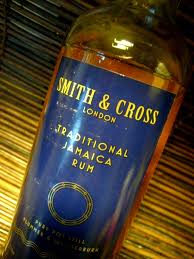
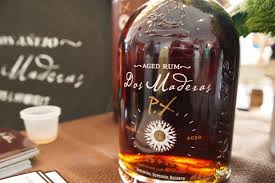
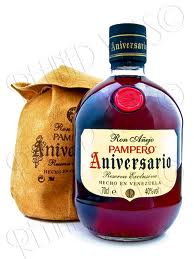
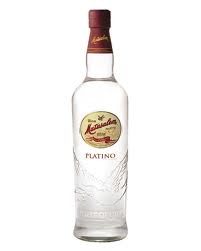






These are the rums I love. Above is the famous picture of the Cubans “liberating” the Bacardi factory in 1959. I am lucky to have a signed copy of the Raul Carrales photo, which I purchased 10 years ago.
Recently I’ve been getting into rum. Although I love single malts, both highland and islay, lately I’m knocked out by the sensuality and variations in different types of rum. Rum is a tropical drink and comes mostly from Caribbean countries.
There is Barbarcourt, 15 year old rum (they spell it Rhum), made straight from sugar cane in Haiti with no molasses, which is unusual. A Frenchman from Cognac, France, started this company in the 19th century. It’s a smooth dark rum.
I also love Matusalem from the Dominican Republic. I prefer the dark, but there is a light version too. I think the dark is one of my two current faves.
Then there is Smith & Cross Traditional Jamaican Rum. a fabulous, perfumed dark rum. This is my other current fave.
Bacardi is the classic Cuban rum, which moved from Cuba to Puerto Rico after the 1959 revolution. I have a great photograph by Raul Carrales of los barbudos (the bearded ones, as Castro’s troops were called, because they all had beards) riding along after requisitioning the Bacardi factory, which is ironic because the Bacardi family supported the revolution.
The Scarlet Ibis is a smooth, dark Trinidadian rum.
Pampero is Venezuela’s great rum, and many consider it the best of all rums.
10 Cane is an inexpensive Trinidadian light rum, great for cocktails.
Finally, there is Dos Maderos from Spain, thus named because the rum is aged in two different madera casks.
Rum is less $$ than single malt. It is more lush and viscous, coats the throat with warmth and goes down slow. It is for sipping, though when I was in Cuba years ago and the rum bottle came out, there were medium-sized glasses that were filled up half way and everybody around me–at 1 p.m.–downed each glass in about a minute or two, then got refills.
Perhaps I like rum because it comes from countries whose music I love: reggae, Cuban, salsa, merengue, calypso and soca (soul calypso), and so on.
Let’s not forget that the Boston Tea Party was not about tea, it was about rum. The colonists preferred French rum from Haiti but were heavily taxed by the Brits, who wanted to sell their own Barbados and Trinidadian rum. In protest the tea got dumped into Boston Harbor, but the whole fracas was about rum, not tea.
Finally, I want to recommend a wonderful little book, Six Glasses that Changed the World. Rum has a nice chapter. The other glasses are coffee, tea, wine, beer, and coca-cola.
I remember in the BBC special The Life of Birds with the wonderful David Attenborough when crows would drop walnuts from power wires over a crosswalk, then wait for cars to run over them and break the shells, then descend to the street and hop with pedestrians across to grab the shelled nuts. Smart birds.
Check out this clip from the BBC show and be impressed:
https://www.youtube.com/watch?v=BGPGknpq3e0
There was a piece on crow intelligence in yesterday’s New York Times Science section titled Moral: Aesop Knew His Crows.
http://www.nytimes.com/2014/04/10/science/the-moral-aesop-knew-something-about-crows.html?action=click&module=Search®ion=searchResults&mabReward=csesort%3Aw&url=http%3A%2F%2Fquery.nytimes.com%2Fsearch%2Fsitesearch%2F%3Faction%3Dclick%26region%3DMasthead%26pgtype%3DHomepage%26module%3DSearchSubmit%26contentCollection%3DHomepage%26t%3Dqry402%23%2Fcrows&_r=0
If I couldn’t drink the water (like if I didn’t have opposable thumbs) I don’t know if I’d have thought of the pebble solution. But the crow did. Smart bird. Here is the Aesop Fable about the crow and the pitcher. By the way, my last name means “beak” in German so I can relate to this fable. Why somebody way back when would adopt the name “schnabel” is beyond me.
A Crow, half-dead with thirst, came upon a Pitcher which had once been full of water; but when the Crow put its beak into the mouth of the Pitcher he found that only very little water was left in it, and that he could not reach far enough down to get at it. He tried, and he tried, but at last had to give up in despair. Then a thought came to him, and he took a pebble and dropped it into the Pitcher. Then he took another pebble and dropped it into the Pitcher. Then he took another pebble and dropped that into the Pitcher. Then he took another pebble and dropped that into
the Pitcher. Then he took another pebble and dropped that into the Pitcher. Then he took another pebble and dropped that into the Pitcher. At last, at last, he saw the water mount up near him, and after casting in a few more pebbles he was able to quench his thirst and save his life.

i love to feel something when I drive a fast car, or as a passenger in a nice car with a good driver at the wheel. Rental cars don’t matter, though when in Europe on nice big autostradas I always drove small cars like Renault 5’s and would have loved a Ferrari or some such supercar. I drive a Porsche with manual shift, and in spite of my earlier derision for Porsche owners (you know the joke about the difference between a porsche and a porcupine?) I have come to appreciate the amazingness of driving this car.
I think this gene was passed on to me by my father. My older brother never cared about cars, so he didn’t get that particular gene. My dad had some beauties when I was growing up, but sadly I was always too young to drive them (except for once or twice). My dad bought 3 gorgeous Ferraris, a 250 GT (red), two 275 GTB’s (burgundy and silver) , and a 308 GT (yellow). He also had a Mercedes Benz 300 SL gullwing (silver, with matching red leather luggage), a Maserati 3500 GT (blue), and almost bought Mel Blanc’s Aston Martin DB 5 (the voice of Warner Brothers cartoons lived up the street, and the same car as the first Bond car). These two last cars had coachwork by Touring of Milan, which always created beautiful-looking cars.
I was never that close with my dad, but I was thrilled beyond belief when he took me in a ride in one of them. I almost hoped I’d be late for school so I’d miss the school bus and Dad would half to rush me down Sunset Blvd. It was so exhilarating being with my dad on those speedy sorties.
I also sat in his cars in the garage, caressing the gearshift, smelling the leather and checking out the beautiful gauges. The Ferrari speedometer went up to 300 (k/m/h, not m/p/h, but I didn’t know that).
It wasn’t all fun, however; I was the one, not my older brother, who had to wax the car with Blue Coral carnauba wax and shine the Borrani wire wheels for several Concours d’Elegances. My dad didn’t win. My older brother got to drive the beautiful 250 GT with coachwork by Boano (red car, classic Ferrari rosso color below). I drove the 275 GTB later on. There is nothing like the sound of the V-12 Ferrari engine. Enzo Ferrari once said “when you buy a Ferrari, you pay the the engine. The rest of the car is free”.
I expect people who drive (or even rent) super cars to at least know something about them. An Aston Martin driver should know what the ‘DB” stands for David Brown, the farm equipment industrialist who created the iconic British sports car. A Ferrari driver should know where the black horse emblem comes from (from a famous WWI Italian figher plane). A Lamborghini driver should know how the company got started (An Italian farm equipment industrialist (just like David Brown) who got insulted by Enzo Ferrari and decided to get back at him by designing another super car). I know all this, and I have never owned any of these cars!
I know most people just choose a car for practical reasons. I don’t want to seem the snob; it’s just that I was more romantic about cars; I was never practical: my former rides include a Jaguar XK 150S, a Citroen, a Peugeot station wagon, a Renault Le Car. Now that I’m older I am fortunate to drive a real driver’s car. The automobile is an amazing object of travel, of speed, of gestalt and driver focus (I don’t text while driving, and wouldn’t even if I didn’t drive a manual shift car. From the body design to the exhaust note, not to mention the racing pedigree and heritage.
Here are some of those beautiful cars I sat in and so admired:



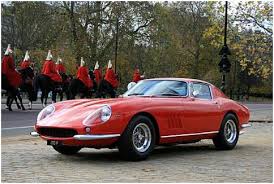
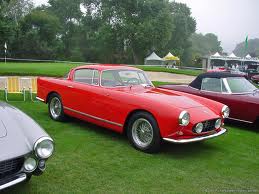




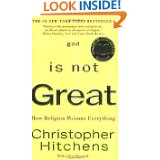

When I read nonsense by Rick Perry and creationist cant, I am appalled by their ignorance: about global warming and many other proven things. When I read about the Voyager Spacecraft leaving our solar system or of the Mars Rover, the fight against cancer, I am astounded. I believe in science, especially if I go in for a medical procedure or just to the dentist. I applaud past thinkers who tried to get us past superstition and unquestioning acceptance of religious dogma. I love Voltaire, the French Encyclopedists, and hope Denis Diderot gets his spot among French immortals in Paris’ Pantheon.
I also am shocked by the violence perpetrated in the name of religion. It’s in the paper every day, staring at me in the face. Christopher Hitchins did a wonderful study of this in his book God is Not Great. I wish Malala Yousafzai had won the recently-awarded Nobel Prize for her courage and perseverance.
And yet, in quiet moments, listening to music that moves me with my cat peaceful and asleep, all these thoughts fade away and I am amazed at the wonder of existence. How can science ever explain the miracle of life?
There was a front page article in today’s New York Times : Textile Plants Humming, but Not with Workers
http://www.nytimes.com/2013/09/20/business/us-textile-factories-return.html?ref=todayspaper
Despite the upswing in textile manufacturing here in the U.S., many workers are being laid off due to automation. This situation recalls a similar one many years ago. Dutch textile workers during the Industrial Revolution were being laid off as textile mills became industrialized. They protested by throwing their Dutch wooden shoes, called sabots because they resembled the small wooden sailboat, into the machinery and disrupting production, sometimes ruining the mills. The resulting act and word became known as “sabotage”.
My old friend from UCLA grad school days, Mark Squires, sent this comment, which is so interesting I am compelled to include it here:
“Tom, my historical sources, though not universally accepted, differ somewhat from the NYT’s story that”sabotage” derived from Dutch textile-mill-workers throwing a ”sabot,” a small wooden shoe named after a small wooden boat, into the machinery. A retired intelligence official tells me that, originally, the disgruntled workers threw the entire boats into the machinery – a very effective tactic. But the capitalists’ agents soon learned to sniff out which workers were carrying boats into factories. The workers adapted by carrying in smaller and smaller boats; and this growing demand eventually led to boats only the size of a shoe (and this, though interesting for surfers, led inevitably to the decline of the Dutch whaling industry).”



When I was 12 and 13, cycling was everything to me. I rode around 100-150 miles weekly, was on an informal team called “Le Voyageurs” (The Travelers), complete with jerseys, chamois-seated shorts, toe clips, the whole deal. A weekend ride would have us all ride from Santa Monica Canyon up PCH to Malibu Canyon Road, then up to Mulholland, and out to Malibu Lake. Then back home again. It was a long ride. The ultimate prize was going up Tuna Canyon road, just north of Topanga Canyon, without getting up off the saddle. I subscribed to a UK magazine called Sporting Cyclist, reading about the Saeco and St. Raphael Geminiani teams, the great Louis Bobet, Jacques Anquetil, and the disgraced UK cyclist Tom Simpson, who was busted for doping. Yes, I’m dating myself….this was a long time ago. This was before I went beserk for surfing.
One day, driving with my mother down Lincoln Boulevard near Westchester’s LMU, we stopped at a bike store where I beheld a beautiful Italian racing bike….a Legnano. It was all-Campy–all Campagnolo components, then the Dom Perignon of derailleurs, brakes, head stems, seat posts, chain sets. Beautiful Italian duraluminum that could have been designed by Leonardo da Vinci. I lusted and longed for that bike. It cost $199.00. My mother said no and I remained stuck with my older brother’s hand-me-down. Later I saved lunch money for three months and bought a Raleigh Grand Prix. But I never forgot the Legnano. It was the bike that got away.
It reminded me of a story I heard once on NPR: a kid who wanted a certain baseball glove for Christmas. He cut out pictures and showed them to his parents. He made it clear that this was the glove he wanted….it had some famous player’s name on it. Christmas came, and the little guy was almost peeing in his pants as he opened a square package smelling of neats foot oil, the stuff they put on baseball gloves. He opened the box and ! was devastated. Instead of the prized $20 glove, it was a cheap knock-off that his parents bought for five dollars. For them it was all the same. For him it was completely different, and painful.
Don’t ask me why, but I looked up this coveted Italian bike that never was, and found a link. Here it is: even in the same chartreuse color I remember so well:
http://www.biciclassiche.com/2013/02/legnano-roma-olimpiade-1960-61.html

Having recently undergone shoulder surgery, on pain meds and having to take ambien because I’m forced to wear a brace and sleep sitting up on my back, I am watching tv more. After finding nothing else on, bored and finding it difficult to hold a book in one hand with my brace on, I turn to local stations for the tabloid news, and out it comes: more guns, murders, mayhem.
The gun debate flared up after New Town and again with Christopher Dorner. Now we have a 20 year-old kid from an upscale neighborhood near Laguna Hills go on a murder spree, killing both in his own home while his parents slept upstairs unawares; yesterday ‘words were exchanged’ between an aspiring hip hop artist and some gangsters in a darkened-window Range Rover kill him in his Lamborghini, taking a few other innocents with them. An Anaheim 7-11 is robbed and the poor clerk is shot and pistol-whipped by some thug in a hoodie and facemask.
When will it stop? Why is America so addicted to guns? The 20 year old was a loner addicted to violent video games…..gee, where have we heard that before? Aurora? New Town? Read More →

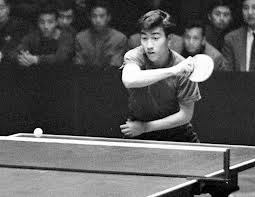
Zhuang Zedong, the Chinese ping pong champion, has just died. He sought out and met his American counterpart, Glenn Cowan during a visit to America in 1971. Zedong was an important private diplomat for Mao’s China, and after this meeting the U.S. Team, including Cowan, was invited to compete in China. This was unprecedented as there had been no diplomatic relations between the U.S. and China since Mao took over in 1949. And of course the Korean War severely exacerbated the already tense relations between the two superpowers.
The U.S. lost the Beijing matches but the seed was sewn. A year later, Nixon went to China, and slowly the rapprochement began. Philip Glass even wrote an opera about it. Read More →

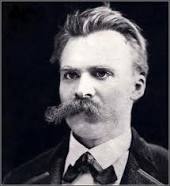
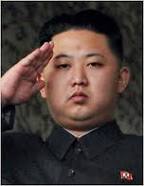 North Korea just launched another missile, claiming self-defense. The young new leader, Kim Jong-Un has declared that the U.S. is his biggest enemy and has pledged to attack us—in self-defense. This brought to mind something I read a long time ago and last pondered in the early 1980s when Brezhnev and Reagan were facing off in the last stages of the Cold War that gave us the jitters back in the 1950s. As the French say, “la plus que ça change, la plus c’est la même chose” (the more things change, the more they just stay the same). Read More →
North Korea just launched another missile, claiming self-defense. The young new leader, Kim Jong-Un has declared that the U.S. is his biggest enemy and has pledged to attack us—in self-defense. This brought to mind something I read a long time ago and last pondered in the early 1980s when Brezhnev and Reagan were facing off in the last stages of the Cold War that gave us the jitters back in the 1950s. As the French say, “la plus que ça change, la plus c’est la même chose” (the more things change, the more they just stay the same). Read More →
I am a lover of cats and I always have been. There was always a cat in the Schnabel household. All of us are kitty nuts. I’ve written on my Rhythm Planet blog of Scarlatti’s Cat Sonata, watch “Too Cute” on Animal Planet, and so on. I’m a sucker for felines.
When you acquire a dog or a cat, however, you sign a Faustian bargain. All the love and companionship over the years with your favorite furry creature must come to an end someday, and that day will be sad. So will the emptiness that follows. I suppose that’s why some prefer parrots or tortoises or even koi, which usually outlive us.
Mr. T, my favorite cat, died yesterday of gastrointestinal lymphoma. He was an alley rescue, a ginger tabby. More precisely, he’d been living in a home across the alley that was more of a boarding house filled with dubious types, so when I added onto my home and built a detached office, yard, and pool, he moved up from a one-star hotel into a five-star hotel. Most people choose their pets; my cat chose me, quite an honor.
Mr. T loved butter and peanut butter, sunbathing in the garden, drinking water from the jacuzzi, and sitting on any available lap. He loved sitting in the production room on top of the studio equipment with the Focusrite compressor on top, which heated up his perch. He wasn’t picky about laps or food, though I always fed him the best. He was also a superb guard cat. Once, after the sound of a gunshot outside, he went to the door and growled, doing his duty to keep us safe. He was extremely affectionate and sociable, often participating in the music salons. Read More →
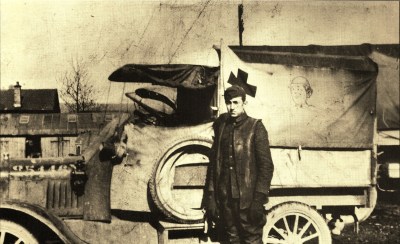
Today is Veteran’s Day, formerly Armistice Day, the 11th day of November, the day the armistice was signed–11/11/18.
Walt Disney was sixteen and officially underage but somehow managed to fake his way into the U.S. Army and got to France in 1918. Read More →
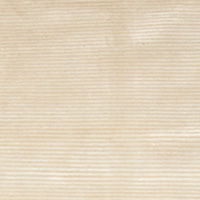
 I recently went out searching for a new living room rug. I eventually found one that cost significantly more than I planned on spending. I bargained and got the price down, which helped me rationalize the somewhat expensive purchase. Then I spent the rest of the week beating myself up about spending so much. Read More →
I recently went out searching for a new living room rug. I eventually found one that cost significantly more than I planned on spending. I bargained and got the price down, which helped me rationalize the somewhat expensive purchase. Then I spent the rest of the week beating myself up about spending so much. Read More →
Read More →

 The Grammy Awards will be given out tonight. The TV broadcast, watched by millions, will feature the largest categories and biggest, most well-known stars. But there are hundreds of other musical acts you’ll never hear there. And then the 31 roots categories that NARAS eliminated from this year’s voting. Read More →
The Grammy Awards will be given out tonight. The TV broadcast, watched by millions, will feature the largest categories and biggest, most well-known stars. But there are hundreds of other musical acts you’ll never hear there. And then the 31 roots categories that NARAS eliminated from this year’s voting. Read More →
In writing a recent blog, inspired by Gustavo Dudamel’s orchestral version of a popular Puerto Rican band’s hit song, I began to muse on the subject of music education: in Venezuela and the U.S. What happened to it here in the U.S.? Why are the arts always the first to be cut during financial squeezes? Read More →
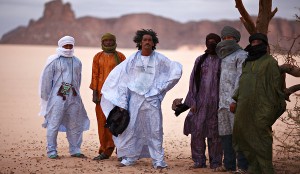
Here is the band in its natural habitat
Tinariwen, the Tuareg group, is back on tour in the U.S. They perform here in LA as part of the Ooh La La Festival organized by the French government. The show is Friday night at the El Rey, and they perform alongside Nouvelle Vague and Etienne de Crecy. Guests on Tinariwen’s set include members of TV on the Radio.
Besides the fact that Tinariwen—the name means “desert”–has become so familiar both here and in Europe, besides the fact that they’ve been touring since 2001, that Robert Plant loves them, and that they’ve done Coachella, KCRW’s World Festival at the HOllywood Bowl among other things–is that the blues mode is familiar to most of us. Rather than moving through a series of chords, what you get is one base key and everything moving in relation to that “home plate” key. This is the hallmark of all the great Mississippi Delta blues that we know and love. Read More →
 A wonderful series of West African reissue compilations have recently been released: Afro-Latin Via Dakar (Senegal), Kinshasha (Congo), Conakry (La Guinée), and most recently, Via Cotonou (Benin, formerlyDahomey). All cd’s show the pervasive infatuation newly-independent West African nations had for Cuban music during the 1960s: not only did the African musicians and bands recognize the African elements in Cuban music, but they loved the innovations and freshness of the Cuban style as well as the socio-political inspiration the Cuban revolution of 1959 gave them. Cuba was not only a musical model but also inspiring on all fronts.
A wonderful series of West African reissue compilations have recently been released: Afro-Latin Via Dakar (Senegal), Kinshasha (Congo), Conakry (La Guinée), and most recently, Via Cotonou (Benin, formerlyDahomey). All cd’s show the pervasive infatuation newly-independent West African nations had for Cuban music during the 1960s: not only did the African musicians and bands recognize the African elements in Cuban music, but they loved the innovations and freshness of the Cuban style as well as the socio-political inspiration the Cuban revolution of 1959 gave them. Cuba was not only a musical model but also inspiring on all fronts.
I’m to do a piece on the excellent program, PRI’s The World tomorrow. It will be on Afro-Latin via Cotonou. Read More →






























 North Korea just launched another missile, claiming self-defense. The young new leader, Kim Jong-Un has declared that the U.S. is his biggest enemy and has pledged to attack us—in self-defense. This brought to mind something I read a long time ago and last pondered in the early 1980s when Brezhnev and Reagan were facing off in the last stages of the Cold War that gave us the jitters back in the 1950s. As the French say, “la plus que ça change, la plus c’est la même chose” (the more things change, the more they just stay the same).
North Korea just launched another missile, claiming self-defense. The young new leader, Kim Jong-Un has declared that the U.S. is his biggest enemy and has pledged to attack us—in self-defense. This brought to mind something I read a long time ago and last pondered in the early 1980s when Brezhnev and Reagan were facing off in the last stages of the Cold War that gave us the jitters back in the 1950s. As the French say, “la plus que ça change, la plus c’est la même chose” (the more things change, the more they just stay the same). 


 The Grammy Awards will be given out tonight. The TV broadcast, watched by millions, will feature the largest categories and biggest, most well-known stars. But there are hundreds of other musical acts you’ll never hear there. And then the 31 roots categories that NARAS eliminated from this year’s voting.
The Grammy Awards will be given out tonight. The TV broadcast, watched by millions, will feature the largest categories and biggest, most well-known stars. But there are hundreds of other musical acts you’ll never hear there. And then the 31 roots categories that NARAS eliminated from this year’s voting. 
 A wonderful series of West African reissue compilations have recently been released: Afro-Latin Via Dakar (Senegal), Kinshasha (Congo), Conakry (La Guinée), and most recently, Via Cotonou (Benin, formerlyDahomey). All cd’s show the pervasive infatuation newly-independent West African nations had for Cuban music during the 1960s: not only did the African musicians and bands recognize the African elements in Cuban music, but they loved the innovations and freshness of the Cuban style as well as the socio-political inspiration the Cuban revolution of 1959 gave them. Cuba was not only a musical model but also inspiring on all fronts.
A wonderful series of West African reissue compilations have recently been released: Afro-Latin Via Dakar (Senegal), Kinshasha (Congo), Conakry (La Guinée), and most recently, Via Cotonou (Benin, formerlyDahomey). All cd’s show the pervasive infatuation newly-independent West African nations had for Cuban music during the 1960s: not only did the African musicians and bands recognize the African elements in Cuban music, but they loved the innovations and freshness of the Cuban style as well as the socio-political inspiration the Cuban revolution of 1959 gave them. Cuba was not only a musical model but also inspiring on all fronts.